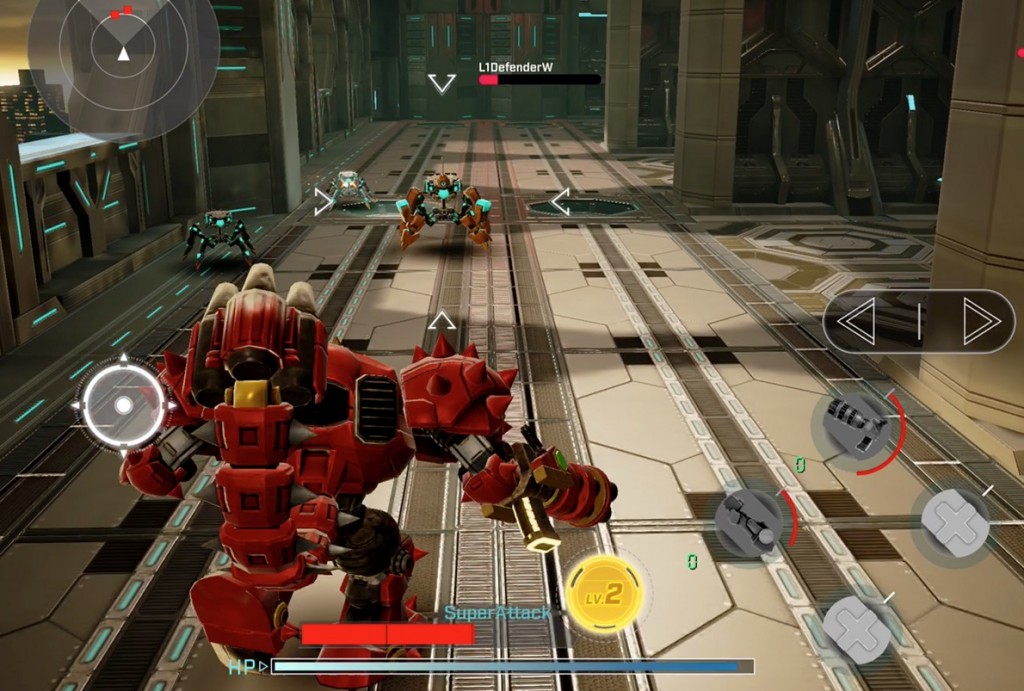When Activision’s Skylanders: Spyro’s Adventure first launched in 2011, it resonated with older kids by balancing the act of imagination with the act of playing a videogame. While it was more structured than a more free-form toy like Legos, Skylanders created the illusion that, by placing plastic figurines on a light-up pedestal, players could bring inanimate objects to life. Adults didn’t understand this. As an added bonus for Activision, this was a natural point of entry into the toy industry, and the ability to bolster sales with a physical product line was something that everyone from Nintendo to Lego would soon pick up on.
The latest challenger to the “toy game” throne is Jumo Inc.’s Infinite Arms, a game that almost instantaneously registers as an attempt to make Skylanders and Lego Dimensions interesting for older audiences. Unlike the physical components of its static, miniaturized predecessors, Infinite Arms features interactive toys that are big and bulky—more action figure than mini-fig—equipped with posable arms and legs, and painted over with a chrome sheen that evokes steel and robotics. Not only are these toys posable, but they’ve got sockets all over the place: two sockets on the back, and two more sockets located near each hand. Press the button on the toy’s chest, and it pops up in-game. Slip a weapon into one of the toy’s weapon sockets, and that comes up too.
If it feels like there’s a lot going on here, it’s because there is. When the Jumo team first showed Infinite Arms to me just over a month ago, their presentation read like a cornucopia of gaming-related buzzwords, bursting with almost every hot tech trend of the past couple years. The game itself, which is planned to launch as a free-to-play mobile title for iOS and Android, seems to defy a quick description sans jargon. It will feature an episodic story mode, as well as a seasons-based third-person action combat multiplayer mode that hopes to follow in the eSports footsteps of games like League of Legends (2009) or Vainglory (2014). The aforementioned toys can connect with a user’s device via Bluetooth, and the whole set will feature purchasable weapon mods that also sync with the game instantaneously.
The cumulative effect of all this technology is to conjure up an illusion similar to what Skylanders and Amiibo brought to the table, only with thicker smoke and less smudgy mirrors. More importantly, Infinite Arms seems to understand what older toy collectors want out of a game like this. The action figures’ art design, led by Transformers and Tamagotchi veteran Yasuo Takahama, takes inspiration from Japanese mecha and tokusatsu series and wouldn’t look bad at all when placed up on a shelf with other collectibles. The game’s seasonal rotation means that weapons can only be bought for a limited time, and the resulting scarcity is meant to translate into demand and, ultimately, a dedicated base of collectors.

I only got the chance to play through a couple rounds of Infinite Arms, and while the Mechwarrior-esque gunplay and side-strafing felt like they hadn’t quite been perfected, it’s hard to say for certain whether the game will bank its success on mechanics alone. What’s more interesting about Infinite Arms, at least at this stage in its development, is what it means for collectors—the demographic whose experience will be most directly influenced by the new tech at play here.
In what is perhaps the most dastardly monetization scheme in recent memory, Infinite Arms’ in-game store sells real-life toy weapon upgrades that, at the touch of the button, are delivered to the player’s home through Amazon. Along with the rest of the buzzworthy features packaged in with the game, this purchasing model says a lot about how Jumo perceives the gap between what kids like about toys versus what adults enjoy about them. Whereas children just want to see their action figures come to life in a game—something that Infinite Arms accomplishes with relative ease—adults use toys as a means of personal expression and as a way of amassing value through their belongings. They want to own weapons that are rare, to hand-paint their figures after the fact, to own limited edition pieces that they’ll never take out of the box. Infinite Arms’ greatest strength is that it’s built to accommodate for all these audiences, which is a funny idea when you consider the one major difference between this game and its predecessors: a more pronounced monetization infrastructure.
You can register for Infinite Arms and find out more on its website.
